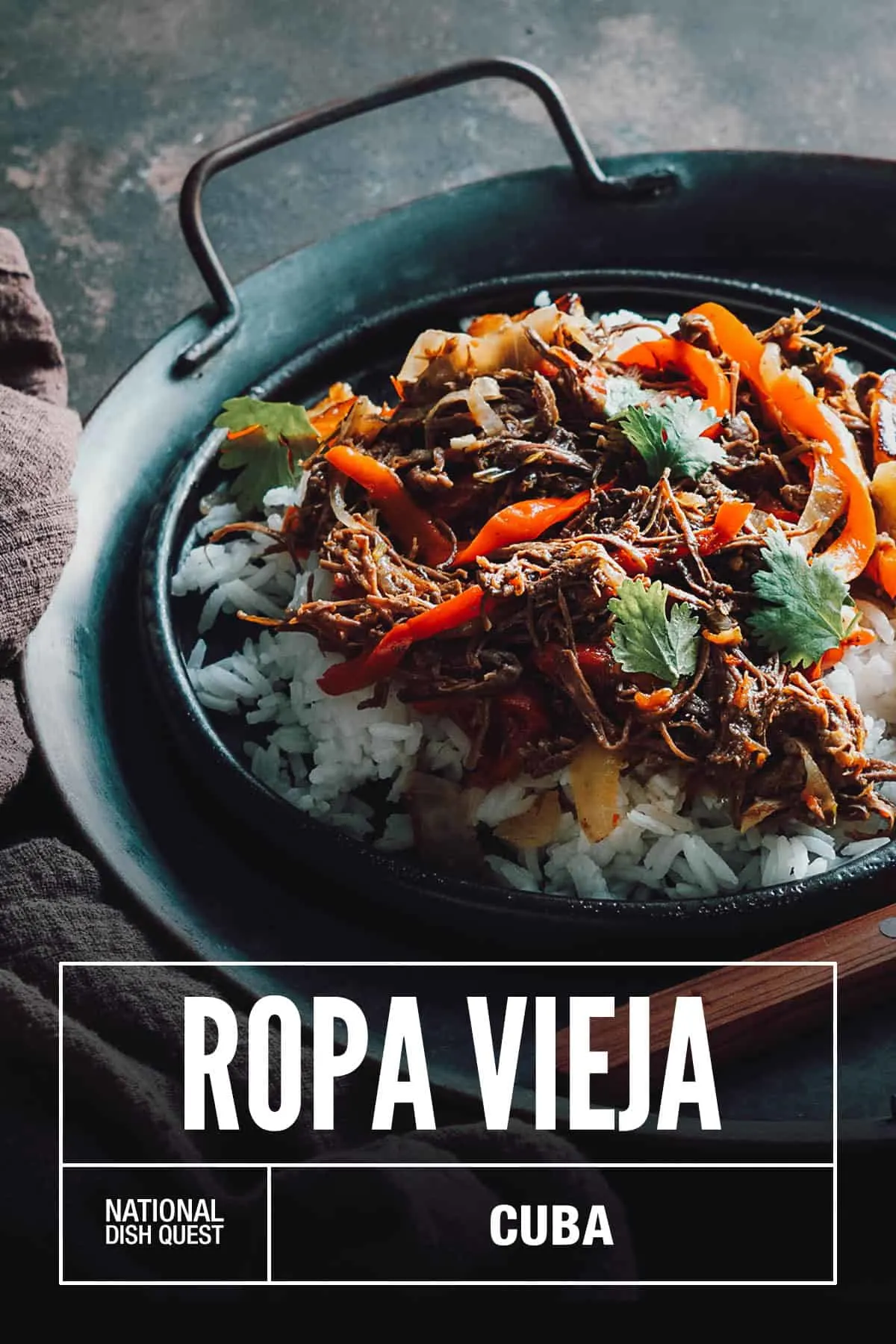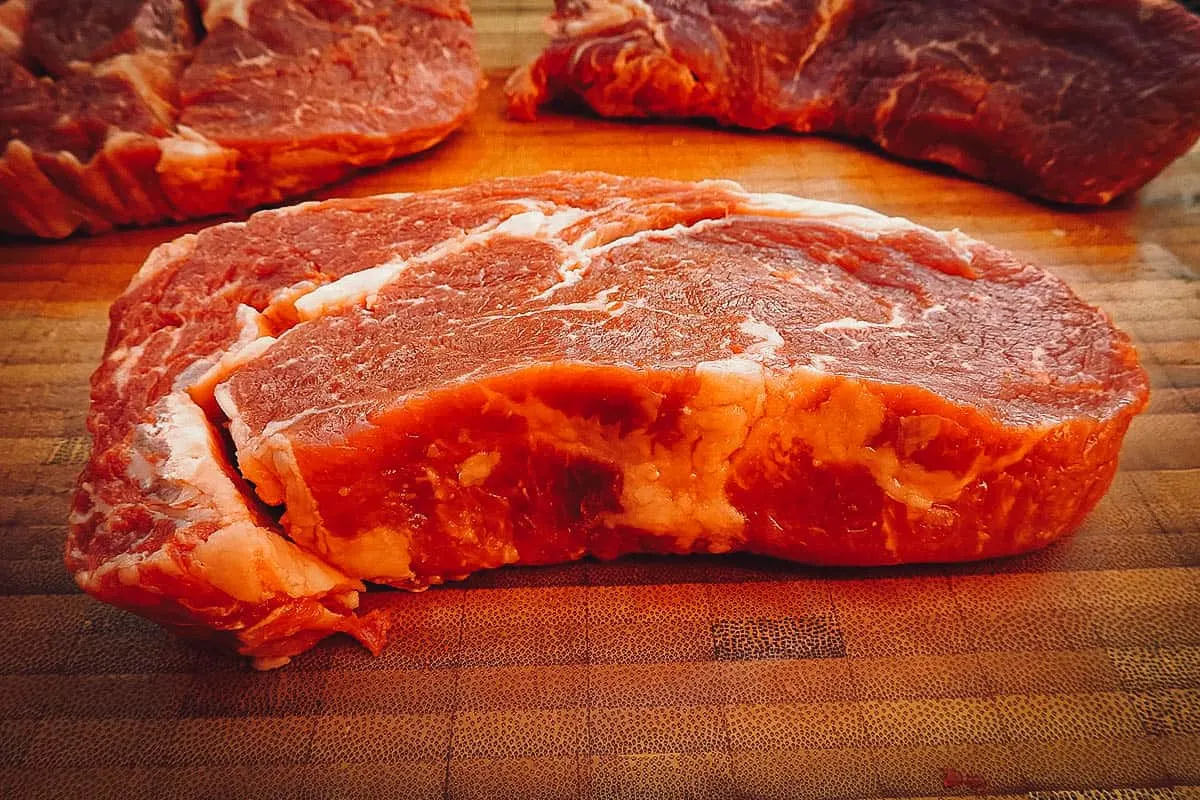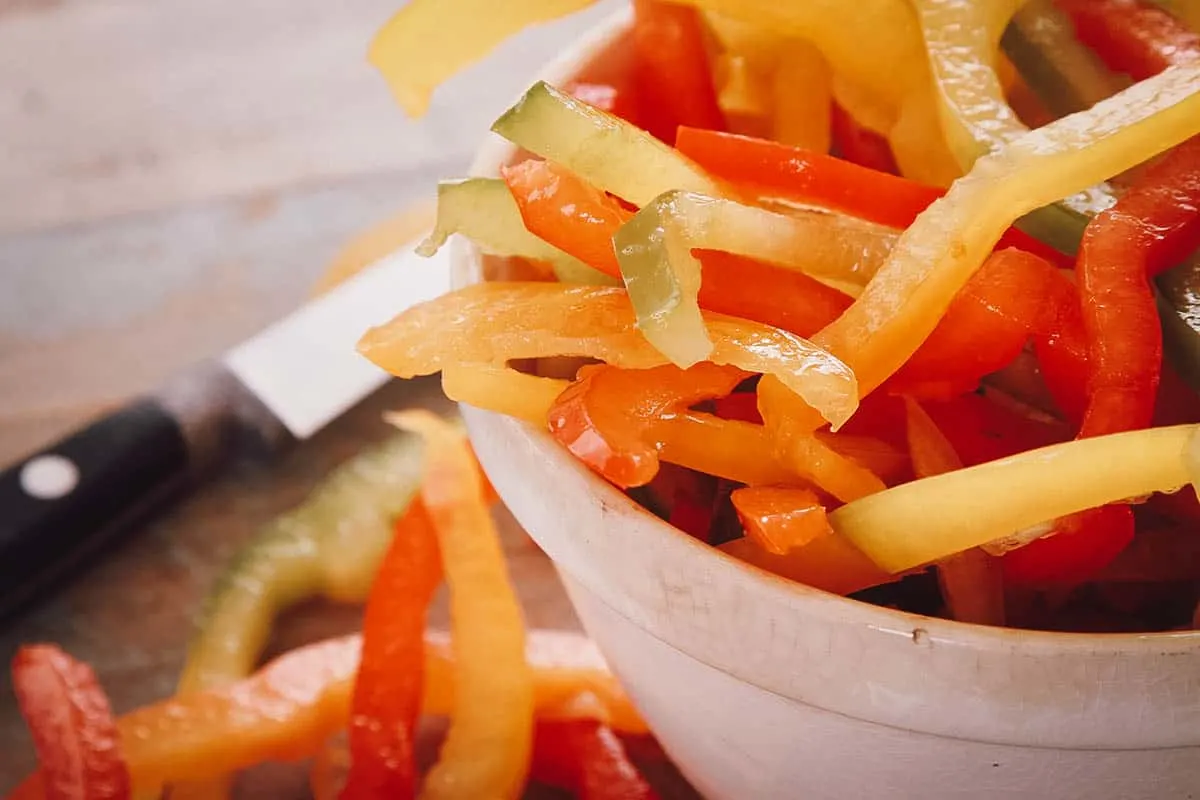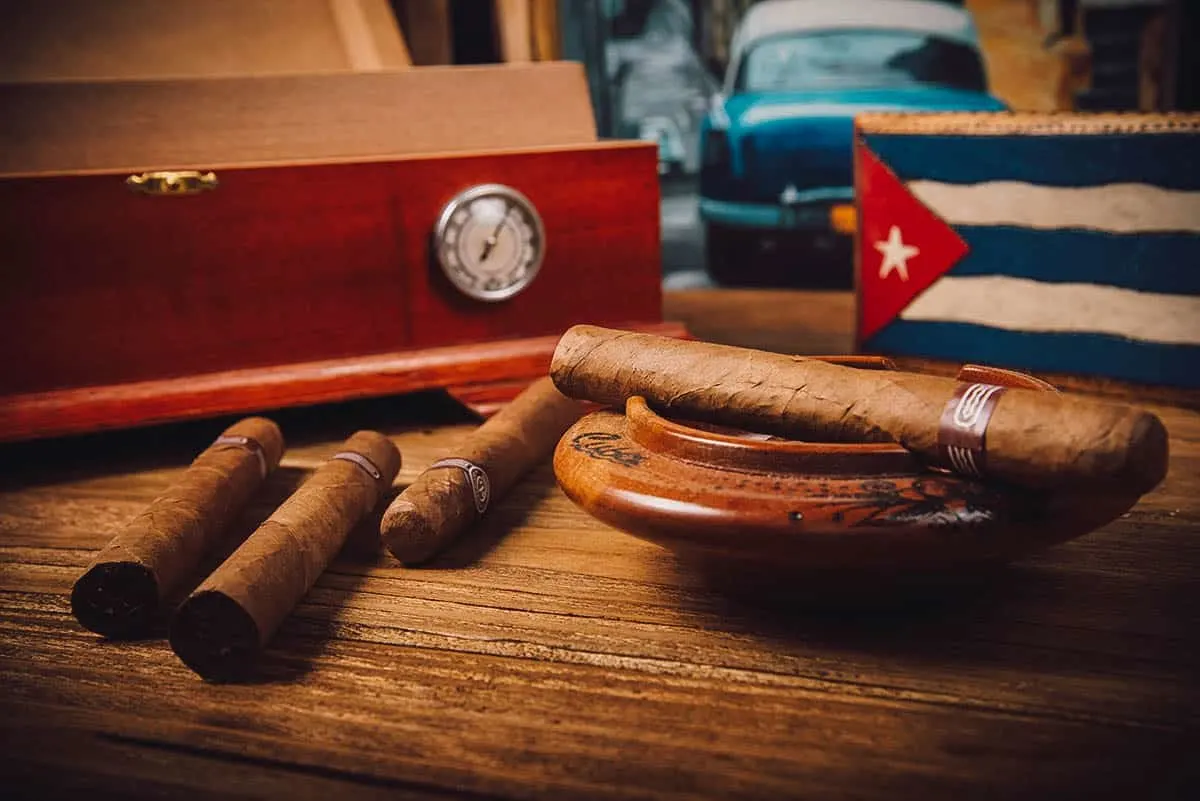EDITOR’S NOTE: Traveleater Daniel Stauffer is a blogger and cigar enthusiast who shares with us his favorite ropa vieja recipe, as well as recommendations on where to try this dish in Cuba.
There is no dish more beloved in Cuban culture than hearty, aromatic Ropa Vieja. This delicious beef-and-tomato stew is classic comfort food for every Cuban and is an experience every traveler must try on their trip to this vibrant island.
Save This on Pinterest!
No time to read this now? Click on the red save button and pin it for later!

Photo by BelarusianArt via Deposit Photos
THE HISTORY OF CUBA’S NATIONAL DISH
Ropa Vieja is steeped in culinary history and holds a special place in the hearts of the Cuban people. Originating in Spain over 500 years ago, Sepharidc Jews on the Iberian Peninsula would slow cook a pot of Ropa Vieja on the night before the Sabbath, as cooking is forbidden on this holy day. The traditional recipe reached Cuba via Spanish immigrants to the Canary Islands and soon became so popular that the locals adopted it as their national dish.
There is also a story about the origins of the name “Ropa Vieja,” which translates to “old clothes.” In the story, a poor man tears up his clothes and throws them into a pot to feed his starving family. He prays over the pot, and miraculously the clothes turn into a dish of stewed meat and vegetables.
THE BEST PLACES TO EAT ROPA VIEJA IN CUBA
Because most of Cuba’s restaurants were government-owned in the past, many chefs had trouble sourcing quality ingredients. This meant that the best Ropa Vieja in Cuba was made at home, and it was challenging for travelers to Cuba to experience the authentic taste of Ropa Vieja while on vacation.
However, within the last couple of years, regulations regarding commercial food preparation have become more relaxed, which allows Cuban chefs to create amazing Ropa Vieja. If you are planning a trip to Cuba, here are some of the best places to find this mouthwatering ethnic dish.
1. Doña Eutimia
Palader Doña Eutimia is one of the top places to eat local food in Havana. They use lamb rather than beef in their recipe. The lamb balances perfectly with the slightly tart tomatoes and acidic white wine.
2. Restaurante Porto Habana
The spectacular view from Restaurante Porto Habana is rivaled only by the deliciously aromatic Ropa Vieja on the menu. Packed full of sweet red peppers, Porto Habana’s version of this beloved national dish is a balance between sweetness and richness that will have you licking the plate clean.
3. Habana 61
Habana 61 is a casual eatery that elevates the traditionally rustic Ropa Vieja to a grand new level. Their take on this dish features succulent, long shreds of slow-cooked beef glazed in a full-bodied, savory gravy that pairs beautifully with their selection of red wines.
TIPS FOR COOKING ROPA VIEJA AT HOME
If you’re looking to try this fantastic Cuban dish in your kitchen, there are a few things to keep in mind before you start.
1. Use the Right Cut
The primary ingredients you need for authentic ropa vieja are beef and tomatoes, and when it comes to beef, the cut makes all the difference.
Traditional recipes call for flank steak due to the way that it pulls apart in strings that resemble the “old clothes” for which the dish is named. However, flank steak is less flavorful than other cuts, and it tends to be tough, so I suggest using chuck steak, which is a classic stewing cut. Chuck pulls apart in shorter strands than flank, but you can get around this by using a taller and wider piece of meat.

Photo by Bru-nO via Pixabay
2. Sear Your Meat
Contrary to popular belief, searing the meat won’t seal in the juices. It will, however, cause a reaction that enhances the savory flavor of the meat, adding a more complex flavor profile to the dish.
Before searing your meat, always pat excess moisture from the surface with a paper towel, and make sure the pan you are using is big enough so that the cut of meat you have doesn’t touch the sides. Season the meat right before placing it in the pan, and once it is in there, resist the urge to move it around. When the meat has developed a good brown color, it should pull away from the pan without resistance.
3. Slice Your Vegetables the Same Size as the Shreds of Meat
To achieve the characteristic look of Ropa Vieja, your vegetables should be the same size as your shreds of meat. When preparing your vegetables, cut them into thin strips. These will caramelize in the pan to add extra flavor to the dish.

Photo by neillangan via Deposit Photos
ROPA VIEJA RECIPE
INGREDIENTS
- 3-4 pounds chuck roast
- 2 Tbsps vegetable oil
- 2 large yellow onions, julienned
- 1 large red bell pepper, julienned
- 1 large green bell pepper, julienned
- 2 Tbsps kosher salt
- 8 garlic cloves, finely chopped
- 1/2 cup dry white wine
- 4 tsps sweet paprika
- 1 Tbsp dried oregano
- 2 tsps ground cumin
- 1 tsp freshly ground black pepper
- 1/2 tsp cayenne pepper
- 1 28-ounce can whole peeled tomatoes
- 2 bay leaves
- 2 tsps white vinegar
- 3/4 cup pitted Spanish olives, halved (optional)
DIRECTIONS
- Pat chuck roast with paper towel. Heat the oil over high heat in a Dutch oven. Sear the chuck roast until well browned, approximately 3-4 minutes per side. Take the meat out of the pot and set aside.
- Preheat oven to 250°F. Sauté green and red peppers, onions, and salt, until soft. Add garlic and stir often to avoid burning. Scrape the bottom of the pan and mix until vegetables are soft and golden. Deglaze the pot with white wine and cook, occasionally stirring, until wine is reduced.
- Stir in remaining herbs and spices for about 1 minute until fragrant. Add tomatoes and crush roughly with a spoon. Bring sauce to a boil, making sure to stir occasionally, until liquid reduces by half. This should take around 5 minutes.
- Place the roast into the tomato mixture with bay leaves. Cover with lid and transfer to the oven. Let the roast and vegetables braise for 2 ½-3 hours until the meat pulls apart easily. Remove from the oven and let it cool for 20-30 minutes.
- Remove excess fat and bay leaves from sauce. Shred beef using 2 forks and mix into the sauce. Add in olives (if using) and vinegar.
Serve with traditional rice, Cuban black beans, and fried plantains. To complete your Cuban culinary experience, enjoy a smooth Cuban cigar after your meal. The best Cuban cigars to pair with a beef stew include full-bodied flavours found in the Bolivar Royal Corona or Punch Punch.

Photo by merc67 via Deposit Photos
FINAL THOUGHTS
Ropa Vieja is even better enjoyed the next day, so make a double batch of this classic dish so there will be plenty of leftovers.
Check out some of the other amazing recipes from across the Globe on the National Dish Quest, and add this classic Cuban dish to your repertoire of comfort food recipes.
Disclosure
The TripAdvisor links in this post are affiliate links, meaning we’ll earn a small commission if you make a booking or reservation at no extra cost to you. We really appreciate your support as this helps us keep this website going. Thank you!


Maria
Wednesday 12th of August 2020
Yo no se como se las arreglan. En los restaurantes del estado no tienen ni sal porque los trabajadores se llevan todo a su casa....debido a la escases. No es lo mismo en los Paladares. Como dicen el ojo del amo engorda el caballo. En los paladares nadie roba...primero son negocios familiares. 2do los empleados ni se atreven a tocar nada. En cuanto a buena comida cubana en Miami....lo siento pero a pesar de tener los ingredientes en los restaurantes casi siempre lo que venden es una version americanizada de la autentica receta. La Carreta es una basura. Solo en algunos negocios de familia todavia encuentras el sabor autentico.
JB & Renée
Wednesday 12th of August 2020
Thank you for your insightful comment Maria. It's unsurprising that the Cuban food in Miami is Americanized to some degree. In your opinion, which family restaurants in Miami serve the most authentic Cuban food?
Cristina L
Thursday 6th of August 2020
You clearly haven’t been to Cuba (or aren’t Cuban) if you don’t understand the relationship of food and politics in Cuba. My grandmother literally died unable to get food. People wait in line to find there’s no meat. Even the best restaurants have no access to quality ingredients and hotels serve bread with mayonnaise because butter is unavailable. This is 2020, not 20 years ago. Having spent time in Cuba and having family there, I 100% applaud Antonio’s apt comments. I love Cubans. They are my family. But what is happening there is very sad and it shows up on the table.
JB & Renée
Thursday 6th of August 2020
Thanks for your comment Cristina. I haven't been to Cuba but the author has. And you're right, I don't understand the situation so I read up on it. I'm sure the author didn't mean to be insensitive but I do understand where you and Antonio are coming from.
Antonio Martinez
Friday 22nd of November 2019
You can't be serious. If you want top notch Cuban food, you go to Miami, not the decimated island. Besides, traveling to Cuba only helps finance the Castro regime's tyranny. Shame on you.
JB & Renée
Friday 22nd of November 2019
The author's article is about food Antonio, nothing else. No need to bring politics into the discussion. And please be more respectful with your comments next time.